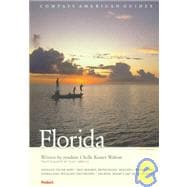
| Florida Overview Map | |
| Landscape, Flora & Fauna | |
| Natural Features Landscape | |
| Map Florida's Critters | |
| History | |
| Early People History Map | |
| The Spanish French Curiosity, Native Rebellion | |
| The British Move | |
| In Pirates on the Seas East-West | |
| Split Seminole Wars [1817-1858] | |
| Civil War Era Railroads and Rough Riders | |
| Early 20th Century Space Flights Cuban Revolution Civil Rights | |
| Theme Parks and Natural Beauty | |
| Panhandle | |
| Travel Overview and Basics | |
| Map of Panhandle Tallahassee | |
| Map of Tallahassee Tallahassee | |
| Sights Live-Oak | |
| Canopy Roads Wakulla Springs | |
| National Wildlife Refuge | |
| Island Apalachicola Cape San Blas Panama | |
| City Beach Seaside Grayton Beach | |
| Destin and the Emerald Coast | |
| Fort Walton Beach | |
| Pensacola Beach | |
| Pensacola Big Lagoon | |
| State Recreation Area Perdido Key | |
| Central Gulf Coast | |
| Travel Overview and Basics Big Bend Area | |
| Map of Central Gulf Region Cedar | |
| Key Crystal River Homosassa Springs | |
| Weeki Wachee Spring | |
| Tarpon Springs Dunedin Gulf Beach Communities | |
| Beach Egmont Key | |
| Map of Tampa | |
| Tampa Sights Scenic | |
| Areas Near Tampa | |
| Lower Gulf Coast | |
| Travel Overview and Basics Bradenton | |
| Map of Lower Gulf Coast Bradenton | |
| Area Sights Anna Maria Island Sarasota | |
| Sarasota Sights | |
| Sarasota's Islands | |
| Siesta Key Inland | |
| Nature Preserves Venice | |
| Charlotte County Lee Islands | |
| Sanibel Island | |
| Captiva Island | |
| Island Route 865 Naples | |
| Marco Island | |
| Heartland | |
| Travel Overview and Basics Alachua County | |
| Map of Heartland North | |
| Map of Heartland South Gainesville | |
| Gainesville Area Sights | |
| Ocala and Marion County | |
| Horse Farms North of Orlando Mount | |
| Dora Mount Dora | |
| Area Sights Kissimmee and Cowmen Cypress | |
| Gardens Lake Wales Sebring | |
| Arcadia Lake Okeechobee | |
| Orlando'S Theme Parks | |
| Travel Overview and Basics | |
| Orlando and Disney | |
| Walt Disney World | |
| Map of Greater Orlando | |
| Universal Studios Florida | |
| Sea World of Florida City of Orlando | |
| Upper Atlantic Coast | |
| Travel Overview and Basics | |
| Map of Upper Atlantic Amelia | |
| Island & Fernandina Beach | |
| Amelia Island | |
| Sights Kingsley Plantation | |
| Area Sights St | |
| Map of St | |
| The Space Coast | |
| Canaveral National Seashore | |
| Merritt Island | |
| Wildlife Refuge Kennedy Space | |
| Center Cocoa and Cocoa Beach | |
| Melbourne South | |
| Treasure Coast North | |
| Hutchinson Island | |
| Jensen Beach and Stuart | |
| South Florida | |
| Travel Overview and Basics | |
| Hobe Sound Nature Preserves | |
| Map of Jupiter | |
| Is. to Fort Lauderdale | |
| Jupiter Island | |
| South from Jupiter Palm Beach | |
| Palm Beach Sights | |
| West Palm Beach | |
| West Palm Beach | |
| Sights Delray Beach | |
| Boca Raton | |
| Boca Raton Sights Fort Lauderdale | |
| Map of Fort Lauderdale to Key | |
| Largo Fort Lauderdale Sights Hollywood and Hollywood Beach | |
| Miami Metro Overview South Miami | |
| Map of Greater Miami "A Local Eats Miami" South Beach | |
| Map of South Beach | |
| Key Biscayne Coral Gables | |
| Table of Contents provided by Publisher. All Rights Reserved. |
The New copy of this book will include any supplemental materials advertised. Please check the title of the book to determine if it should include any access cards, study guides, lab manuals, CDs, etc.
The Used, Rental and eBook copies of this book are not guaranteed to include any supplemental materials. Typically, only the book itself is included. This is true even if the title states it includes any access cards, study guides, lab manuals, CDs, etc.
Excerpted from Florida by Chelle Koster Walton
All rights reserved by the original copyright owners. Excerpts are provided for display purposes only and may not be reproduced, reprinted or distributed without the written permission of the publisher.